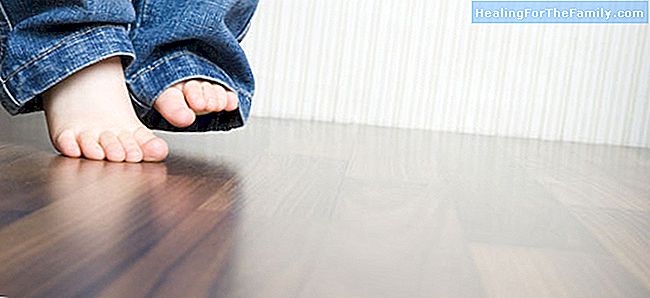When the child walks on tiptoe
The moment in which the baby finally gets to take his first steps is really a milestone in his evolution at the psychomotor level. Little by little the baby gains in speed, and that's when suddenly you can see that he does not finish planting his foot when he walks, but walks with the tip of his foo
The moment in which the baby finally gets to take his first steps is really a milestone in his evolution at the psychomotor level. Little by little the baby gains in speed, and that's when suddenly you can see that he does not finish planting his foot when he walks, but walks with the tip of his foot .We explain if it is normal for the baby to start walking in this way and when we should worry.
Find out what happens when the child walks on tiptoe .What pathology exists when the child walks on tiptoe
If your child is already walking alone and increases the speed of his walk, but

you notice that he steps on tiptoe, you may start to worry. But ... is it normal for him to walk like this? Up to two years and in exclusion of neurological pathologies can be considered normal. However,
after three years if you walk and run on tiptoe, even if you perform voluntary foot support, it can be considered pathological. In that case it would be advisable to consult with the podiatrist. It's funny, but this type of pathologies
affects children more than girls. In addition, genetic inheritance may be a factor in this syndrome. When examining your child, the specialist will consider the following:
- If it was premature.
- The risks you had in your pregnancy and during delivery.
- If as a baby the child crawled.
- If the child has used a walker.
- If you have detected episodes of clumsiness in your walking, cramps or falls.
Treatment of idiopathic tip walking in children
The latest scientific studies indicate that the most effective treatment for this pathology related to the child's progress will be that carried out by a multidisciplinary team:
Pediatricians, chiropodists, physiotherapists and neurologists will work in a joint .Ideally, a routine pediatric check-up scheduled at least 2 times a year at very young ages.
From the podological point of view, the treatment is aimed at preventing the definitive shortening of the muscles that cause the deformity. This is carried out through personalized exercise tables and supervised by the health professional who will be assessing the evolution, so that in the future the progress will normalize.
Source: Unit of Podiatric Pediatric University Clinic University of Extremadura (UEX)












